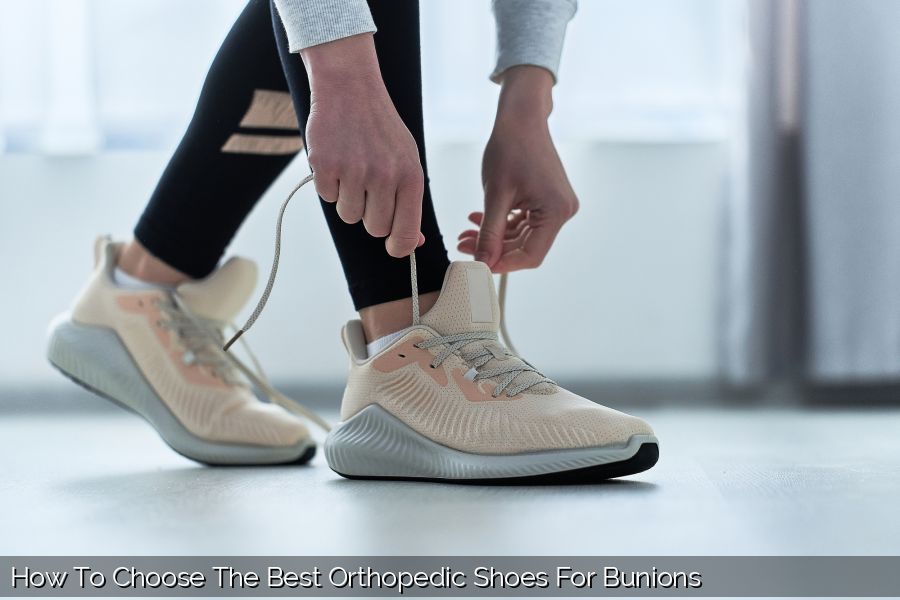How To Choose The Best Orthopedic Shoes For Bunions
To choose the best orthopedic shoes for bunions, consider the type of material that the upper part is made of. Soft material prevents the shoe from rubbing against the bunion joint and surrounding tissues. Soft upper materials are flexible, and conform to the shape of the foot. Soft materials are more comfortable for the bunion-prone foot, as they provide better cushioning and support. These qualities make orthopedic shoes for bunions more comfortable for people with bunions.
Vionic
If you’re prone to bunions, you need proper footwear. It’s crucial to choose shoes that are sized appropriately, so the foot doesn’t twist when you walk. Vionic offers wide width shoes, as well as styles with adjustable uppers to accommodate wider feet. Biomechanically engineered Vionic shoes feature built-in orthotics and an arch support. They also feature roomy toe boxes and durable shock-absorbing outsoles.
For men, Vionic offers fashion-forward orthotic sandals for bunions. The company also offers men’s orthotics, which can be added to any closed-toe shoe. These shoes are designed to relieve the discomfort caused by hammer toes, which are raised circular bumps on the toes caused by imbalanced small muscles and tendons. Hammer toes often affect the four smaller toes, though they can spare the great toe.
For women, Vionic has a line of sandals with exceptional arch support. T-strap sandals, which feature a low-profile design, are a great choice for everyday wear. A built-in arch support helps to relieve pressure from the big toe joint to the arch. A deep heel cup and a soft, breathable footbed also provide comfort. The Vionic Women’s Tokyo Sneakers are also a great choice. They feature a contoured rubber sole to promote flexibility and stability, and are available in various styles.
Because Vionic offers men and women’s Vionic orthopedic shoes for bunions, you’ll have many options to choose from. From comfortable sneakers to stylish sandals, there’s a Vionic shoe out there for every style and mood. If you’re looking for a new pair of walking shoes, look no further than Vionic. These shoes are designed to provide maximum support for your foot and prevent pain in other parts of your body.
Dr. Scholl’s
Slip-ons are a great option for a bunion. They feature an anatomically correct footbed and a cushioned heel that offers relief and significant comfort. A bunion-specific insole provides extra support. Flexible construction helps prevent rubbing and blistering. Vionic’s Madison Slip-Ons provide significant comfort and ease of wear. They are also available in a regular and wide width.
Basic shoes with tight toe boxes, high heels, and cramped toe boxes can aggravate your bunion. Choose shoes with a gradual slope heel to distribute weight evenly throughout the foot. High heels are especially bad for bunions because the angle puts the foot’s weight on the ball of the foot, which is where the pain is. Instead, choose flats or shoes with a gradual slope.
Another option is a pair of toe separators. These devices prevent the big toe from pressing against the big toe. They are thin, nearly invisible, and stay on throughout the day. If you have a bunion that’s worse than your bunion, you may want to try these products. They’ll offer you all-day comfort without the pain or pressure. And they’re easy to remove.
Despite their name, Dr. Scholl’s orthopedic shoes for bunions are not just for men. Whether you’re a female or a man, there are many stylish shoes to choose from. However, most of them don’t offer arch support, which is vital for the healing of a bunion. Fortunately, there are orthotic sandals for women that offer excellent arch support and relief from bunion pain. The Vionic Sandals are one of these.
ECCO
If you’re suffering from the pain associated with bunions, ECCO orthopedic shoes are the best choice. These shoes provide correct anatomical support to the foot and ankle, preventing pain and inflammation. The shoes are shaped to help the joints move in the right direction. ECCO’s patented design features the correct amount of support and width to prevent bunions. The firm, high-quality design also makes them comfortable for sensitive skin.
Vionic soft suede slip-ons have a wider toe box and a thicker midsole for extra cushioning. They are designed to stretch to fit and give you plenty of toe-wiggle room. They are also made of quality materials and come in regular and wide widths. This design helps the shoes fit your bunion-prone feet comfortably. The Vionic round-toe block heel is another option.
When choosing the right shoes for your bunion pain, it’s important to choose the right size. While buying a pair of shoes, consider the width and the material of the shoe. A bunion-prone foot will feel more pressure if the shoe is too narrow or too high. Avoid shoes with high heels unless you’re in need of them for an extended period of time. In summer, try not to wear thin-soled shoes that put pressure on the bunion.
While genetics can play a role in causing bunions, foot injuries and foot deformities can also cause them. When the big toe becomes deviated inward or bends toward the second toe, the joint becomes inflamed and painful. Bunions can lead to painful blisters and bursitis. When you wear shoes that irritate the affected area, bunions can become progressively worse and the shoe needs to be replaced.
KURU
KURU orthopedic shoes are designed to help people with bunions and other foot problems walk without pain. They are extremely comfortable and are made from high-quality materials. A comprehensive website provides a detailed description of each product, including comfort and durability information. In addition, the website offers information about the different types of footwear and professions that require these shoes. This means that anyone can find the right one for their specific needs.
Besides being made for bunions, Kuru also offers shoes for a variety of medical conditions, including plantar fasciitis, arthritis, diabetes, fibromyalgia, and more. These shoes come in a variety of styles to accommodate every occasion and activity, including dress shoes, hiking boots, and sneakers. A customer can also choose the type of arch support he or she needs to improve the function of his or her foot.
There are several factors that cause bunions. Genetics, inflammatory joint diseases, foot injuries, and arthritis are some of the causes of bunions. Bunions are caused by abnormal movements of the bones in the big toe, causing them to bend inwards toward the other toes. A bunion is also exacerbated by wearing shoes with high heels or high arches, such as pointed toes. To prevent this condition, it is best to replace your regular shoes with supportive ones.
The AALTO Chukka boot is an excellent choice for dressy office attire. The boot features an arch-supporting TPE strobel board and an eva midsole. This shoe is listed as non-vegan and comes in sizes seven to thirteen. Whether you prefer classic dress shoes or the latest fashions, KURU shoes for bunions have what you need to look stylish and fashionable while still protecting your feet.
Dr. Scholl’s Cloud Hattie
When it comes to choosing the best orthopedic shoes for bunions, many experts recommend looking for shoes with stretchable fabrics or multiple widths. Stretchable fabrics make it easier to accommodate orthotics, while rigid bottoms control overpronation. High heels exacerbate bunions, while shoes with a 1-1.5-inch heel can help. The lower the heel, the easier it is for the rest of the foot to rotate into a biomechanical position and minimize pressure on the big toe joint.
Comfortable and stylish, these orthopedic shoes for bunions have a padded heel and an anatomical footbed to provide maximum comfort. They are also made with extra cushioning in the heel to protect bunions from rubbing and pressure. With their cushioned soles, Dr. Scholl’s Cloud Hattie orthopedic shoes for bunions are sure to be a favorite among many women.
George Brent, an ace stage director, was in town for a short vacation. He never left his wife, a former spy, in his sights. George Brent, a British war veteran, had a few days off, and was staying at Hayes Lodge. The ace scenographer had just returned from war service and was visiting Hayes Lodge during the time of the British occupation.
The most important feature of a good shoe is its support. It should prevent your foot from collapsing or rolling inward, which is one of the main causes of bunions. Good shoes should provide cushioning in the toe area and a high-quality sole to absorb impact. Those features will prevent pain caused by pressure on the big toe joint. It also helps to promote biomechanics and prevent bunions.

